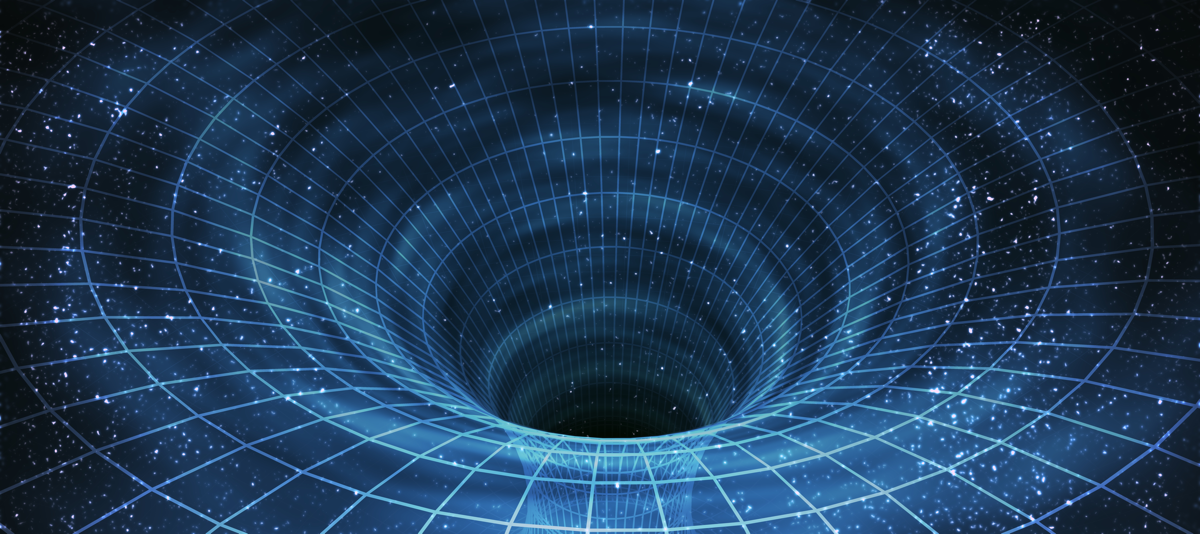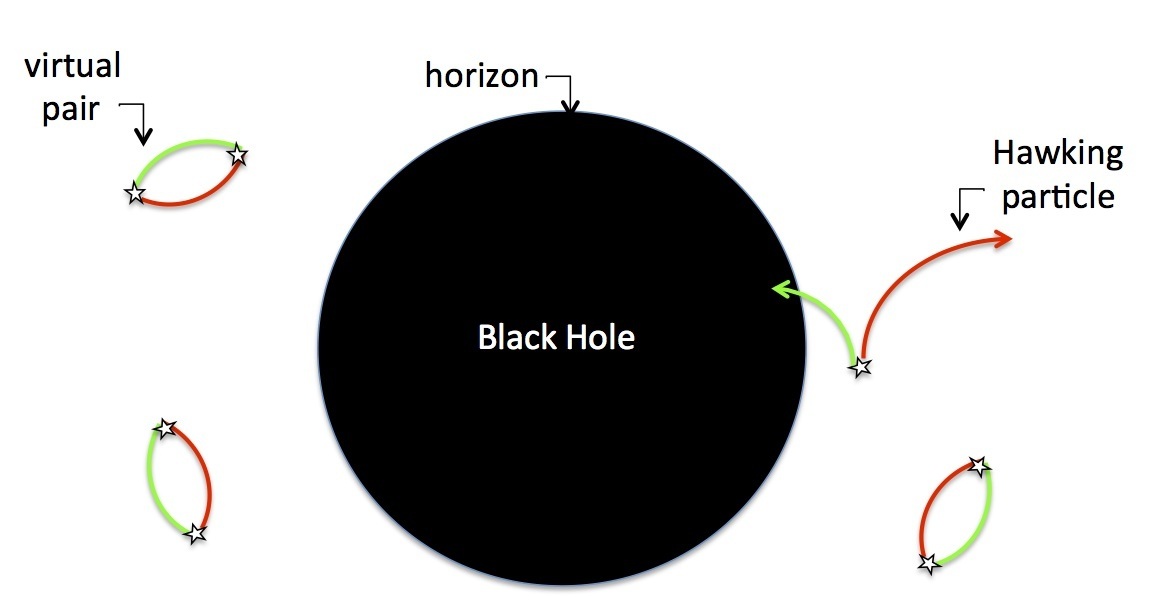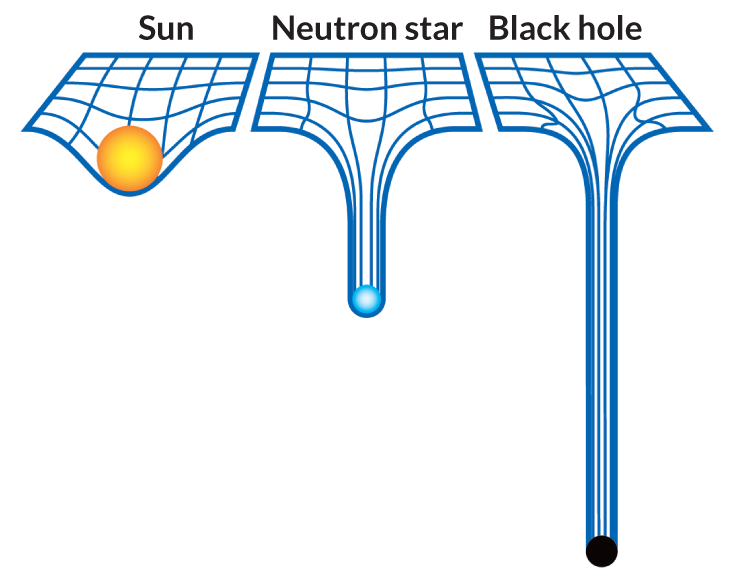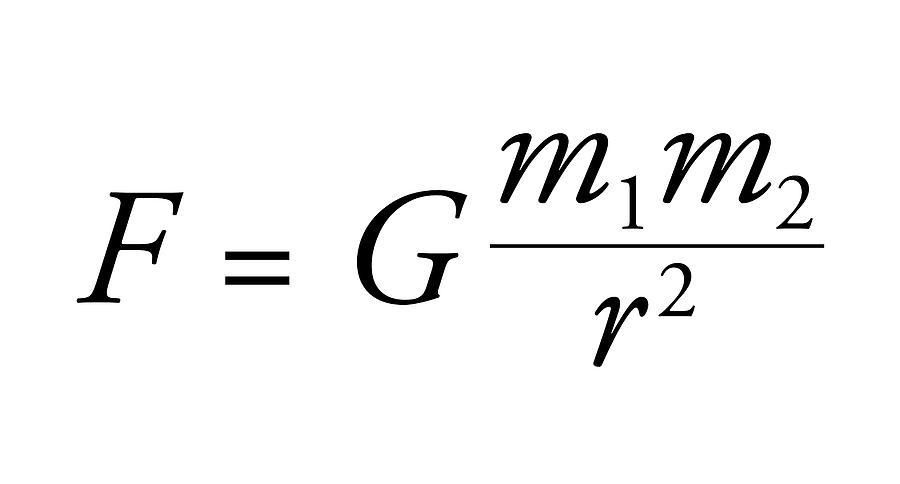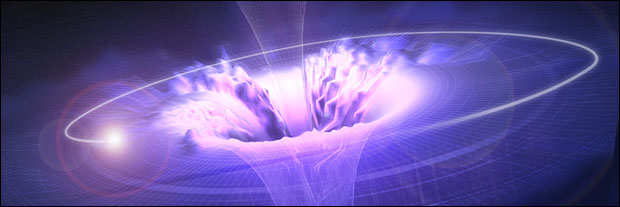Will a Black Hole Swallow up the Whole Universe? & Other Questions About Black Holes
By Jon Therkildsen, MSc MBA from University of Århus (2004)
THIS ARTICLE WILL ADDRESS AND ANSWER THE FOLLOWING:
WHAT IS A BLACK HOLE?
WHAT IS THE PROBLEM WITH SINGULARITIES?
WHAT IS HAWKING RADIATION?
WILL A BLACK HOLE SWALLOW THE UNIVERSE?
It could, but in the end, it won't. Before diving into the headline allow me to set a few things straight first:
WHAT IS A BLACK HOLE?
A black hole, in cosmology, is essentially a collection of highly compressed mass. Simply put; add more and more mass to a star - or a planet, or anything really - and the nature of gravitation will create a gravitational pull so strong that even light particles cannot escape.
The point where light cannot escape is called an “Event Horizon” because, by this horizon/or border, information of any kind cannot escape. There is no further event, so to speak.
The very center of a black hole, where all the mass assumes the highest compression, is called a singularity.
What does “just” compressed mass mean? Imagine if we would replace our Sun with a black hole of similar mass, how would this affect our Earth? We would not get any tan, but apart from that not much. As we learned above, a black hole is a collection of compressed mass, and from a certain point of view, so is our Sun. In fact, Earth would continue its orbit as though nothing happened. And it would continue like this forever, or until something else would disrupt this balance.
Black holes and their gravity are not so different from other celestial bodies. Celestial bodies are mass. Black holes are just more extreme collections of mass.
Generally, we have three classifications:
Stellar Black Hole: The most popular and known form. We define them medium-sized, and their mass is typically around 20 times that of the sun, with a volume of about 15 km in diameter. Stellar black holes form when a massive star collapses in upon itself. This collapse can cause a supernova, that blasts part of the star into space. But, at its previous center, you will find our newborn friend.
Supermassive Black Hole: Those are the guys you find in the center of most galaxies, and their size varies. They are considerably more massive than Stellar black holes - at least something like a hundred thousand times more massive or so, or even as large as a billion times more massive.
They are formed at the same time as their surrounding galaxy is formed. But the mechanics of how they form is still not entirely understood. Perhaps they begin like Stellar black holes, and then rapidly keep on feeding on the surrounding chaos - but, as I say, it is still an open question.
Primordial Black Hole: The smallest kind. We call them that because their heyday was at the beginning of the Big Bang. Their hypothetical existence is a consequence of all the mayhem that went on. They were no bigger than an atom in size, with the mass of a large mountain, or could be no more massive than the average human.
OUR PROBLEMS WITH BLACK HOLES & SINGULARITIES
Black holes’ essential structures are no mystery; however, their factual structures are.
According to our best equations (chiefly The General Theory of Relativity), the very center of a black hole is a so-called; singularity. A singularity means we are not sure what happens from this point on. Our equations can take us to the very point just before the singularity, but past this point and our equations break down.
It means we cannot, with scientific confidence, say what happens at the center of black holes, except we know that whatever is there, our physics cannot describe or predict.
It doesn’t mean a singularity is magical. Speculations of wormholes or interdimensional gateways are nonsensical and chiefly unfounded. All we can conclude is that our understanding of the geometry of our universe is broken at these singularities. Our understanding is lacking something. Likely, it is a yet unknown category-compression of mass, a form of conception of exotic matter, or other logical continuations of our current understandings. Nevertheless, we do not know, and we can not say.
The solution to this problem will come from grand unifying equations, a “theory of everything” so to speak. We will find this via a combination of Quantum Mechanics and the General Theory of Relativity. These theories are kings at describing the quantum world and the macro world respectfully, but combine them together, and they fail.
Once a proper marriage between these two realms of physics is accomplished, then we will be able to probe deeper into what happens at these singularities. But, insofar, we have not succeeded. Some of the more popular candidates for this, are String Theory or Quantum Gravity. Alas, we must wait for this invitation to arrive before we can get to a more fulfilling answer.
WHAT IS HAWKING RADIATION?
Imagine a pair of virtual particles just randomly popping into existence, somewhere in space. It happens all the time, as described by what we call quantum fluctuations. It is a real phenomenon with observable (and verified) effects. The pair are each other's annihilators. Negative and positive energy, equalling zero. They pop into existence and pop out of existence, just as soon as they arrive.
If it happens at the edge of a black hole - just at the event horizon - these pairs of particles are split up before they have a chance to annihilate each other. They are torn apart, if you will. One falls into the black hole, and one flies away. The one that flies away is positive energy, the one that falls in is negative energy.
That is Hawking Radiation.
Those flying away will be detectable radiation - unsuccessfully detected so far, but it is generally believed it will be confirmed eventually.
Compute this phenomenon in our equations, and it will result in a net negative energy effect on the hole. The hole receives negative energy by the Hawking Radiation, and therefore a net negative effect to all the positive energy (or mass) that is within the hole.
It effectively means that the black hole will lose energy despite it gaining one of the split particles. And in time (eons of time) this net negative effect from all the pairs of particles that a black hole will split up, will reduce the hole to the point of it vanishing completely.
The holes will evaporate, as Stephen Hawking called it.
That is Hawking radiation: The only thing in the universe that can destroy a black hole. It will take a long time (trillions of years) but, according to this not-yet-verified hypothesis, it will be inevitable.
WILL A BLACK SWALLOW UP THE UNIVERSE?
The current general model in cosmology describes how an increase in mass will deepen the gravity well of a black hole, and extend the event horizon proportionally. This means that we have enormously different sizes of black holes out there. But is it not as all-devouring as it sounds.
Leonard Susskind, is a leading authority in Theoretical Physics and he theorizes an alternative idea (a hypothesis proposed in 2018) that the expansion of black holes happens within them more than around them. And if more added mass is not translated into an exterior diameter, it also means the growth will not encompass the whole universe - even if left forever. And even if everything would fall in, the hole can keep its limited exterior size.
Imagine a water-well in the backyard. It will be scarier the deeper it is (and you can fill in more, the deeper it is), but it won't suck in the house no matter how deep it gets. As long as its diameter in your garden remains unchanged (or changes marginally), it doesn't matter how deep it may be.
A black hole is sort of like that.
An answer to the headline is that the geometric space expansion can happen within a hole, and so will have no alarming effect on us, while we are hanging around outside the hole - just like hanging around in a garden, with a very deep well.
Another answer - currently supported by our theories - says that black holes deepen their wells, and stretching space-time with them down. And this will change their event horizon to some extent, but not in any exponential out-of-control kind of way.
Look at this picture:
All of those three examples in the picture have more or less the same diameter in space-time, yet vastly different wells/gravitational pulls. And this diameter on the surface is what matters, because this is where we live - like the house and the garden in my above example. Anything beyond this diameter won't be affected much.
Stay away from the well, and you will be fine. Your mother is right.
A caveat here is that gravity is a forever reaching effect.
Law of universal gravitation
“r” is the distance between the center of two object's masses.
From the equation, we see that the gravitational affect diminishes the further apart two objects are, though, an affect there will always be no matter the distance.
Imagine a universe with just two objects and nothing else: a baseball and a baseball bat. Leave them at the opposite ends of the known universe. 93 billion light-years apart. Leave them alone, long enough…. long long long long long long enough, and they will attract and meet each other eventually.
If this Law of Universal Gravitation works for a baseball bat, why won't black holes do the same?
Well, they will. Either it will become like locked orbits, as we dance around the Sun now, or they will devour all in time. But it will be one of those - one is not guaranteed over the other.
However, it will not end in or around just one black hole. It may end in many: While the Law of Universal Gravitation has infinite reach, and ought to eventually attract everything into one hole, the cosmologists of today tell us that the universe is expanding faster than gravity can ever pull its farthest corners together. This expansion is fueled by what we call Dark Energy, and this expansion exceeds the speed of light. In the real universe, the mentioned baseball and bat will therefore never meet because space expands faster than gravity attracts and even permeates. Inside and around the galaxies, though, the force of gravitation wins. It is the strongest here. Outside of galaxies, the expansion of space begins to win.
Extrapolate this further, and in light of the headline, and we will have a forever-expanding universe with innumerable black holes where galaxies used to be, or we will have smaller galaxies that have locked orbits around their black hole centers. Further, interstellar comets or rogue planets, etc. may remain interstellar forever, if their path in this expanding universe keeps them clear of galaxy interaction.
Ultimately what our universal clusters are looking at, are locked dances for eternity or many deadly feasts. Likely a good mix.
Only time will tell. And yet, we have our friend Hawking lurking in the shadows still. His radiation will eventually evaporate all the black holes. And in a dynamic universe, does this means equilibrium will never be reached?
Perhaps…
[/* note to the gravity-well illustration above: Naturally, steller black holes cause a much larger bend in space-time than our sun or neutron stars. For supermassive black holes, like the one we have in the center of our galaxy (named Sagittarius A*), it is bigger still. However, the principle is the same - keep your distance and stay away (or orbit it forever). Don't get too close to the sun. Don't get too close to a black hole. Stay away from that deep well in the back yard as well (pun intended)]
Photos via Google
